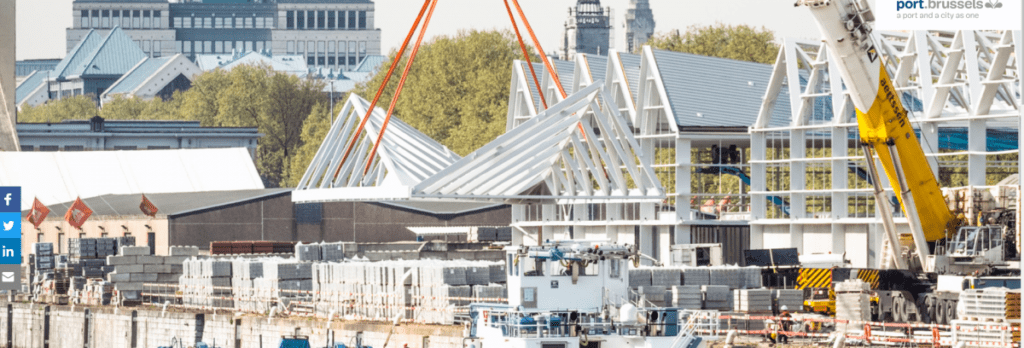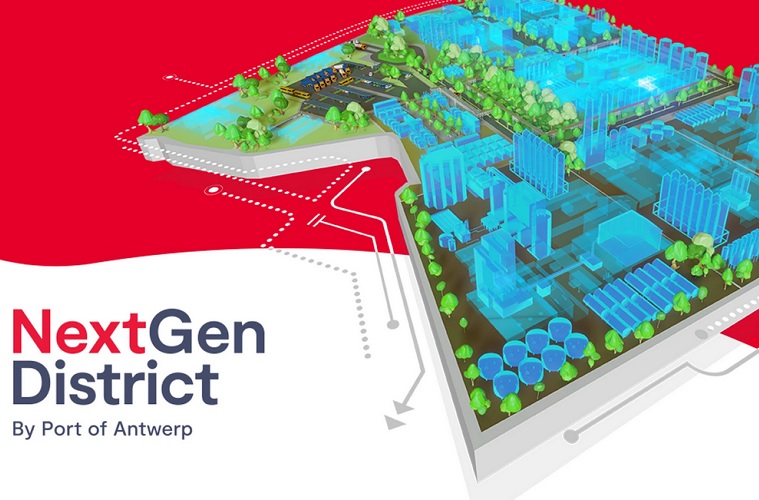A network of transhipment platforms along the canal
What’s happening? How does it happen?
The Port of Brussels is developing a network of transshipment platforms along the canal, in order to organize urban distribution by waterway. The aim behind these platforms is to ensure the delivery of goods as close as possible to the end user and to reduce the costs involved in the ‘last kilometre’. However, the longer this post-routing distance is, the more cost-effective it is to use high-capacity vehicles. On the opposite, smaller and greener vehicles that are better adapted to the city can be used when the distance traveled is reduced.
Why is this an interesting circular initiative for ports?
This project promotes the use of waterways, reduces road traffic congestion, and offers a realistic alternative to reorganize urban logistics. This platform system makes it easy to integrate intelligent palletized logistics that is better suited to the inland ports where the city-port interface is under constant pressure.
What is the relation with the port and water?
The platforms are located within the port and act as a hinge between the canal and the city. The palletized transport represents a unique solution to urban logistics and helps to create an adapted interface between city and port, as their size allows them to adapt to the city’s supply by water.
What is the relation with the city?
Shifting to waterways for transporting goods to the city reduces congestion, improves air quality (provided that the rise of ship traffic entering the city will be accompanied by measures to reduce its emissions), and frees spaces that can be used for other purposes. Increasing the number of transshipment platforms on the canal quays intends to make this modal shift economically interesting for companies, by bringing goods closer to their final destination.
What are the ambitions?
The objective of the Port of Brussels and the Brussels Capital Region is to promote alternative freight transport solutions and stimulate the modal shift towards waterways and rail. Palletized transport seems a viable alternative for Brussels, since goods can be loaded directly from the ship, which is itself equipped with a crane that allows to operate independently of available quay infrastructure.
Who is behind it?
The Port of Brussels is a partner in various European and local projects aimed at improving urban distribution. To fulfill its mission as a logistics facilitator, it works momentarily to set up an adequate urban distribution infrastructure. In addition, the Port is one of the partners in the European LAMILO project (LAst MIle LOgistics), which has been running an urban distribution service since September 2014, operated by CityDepot.




